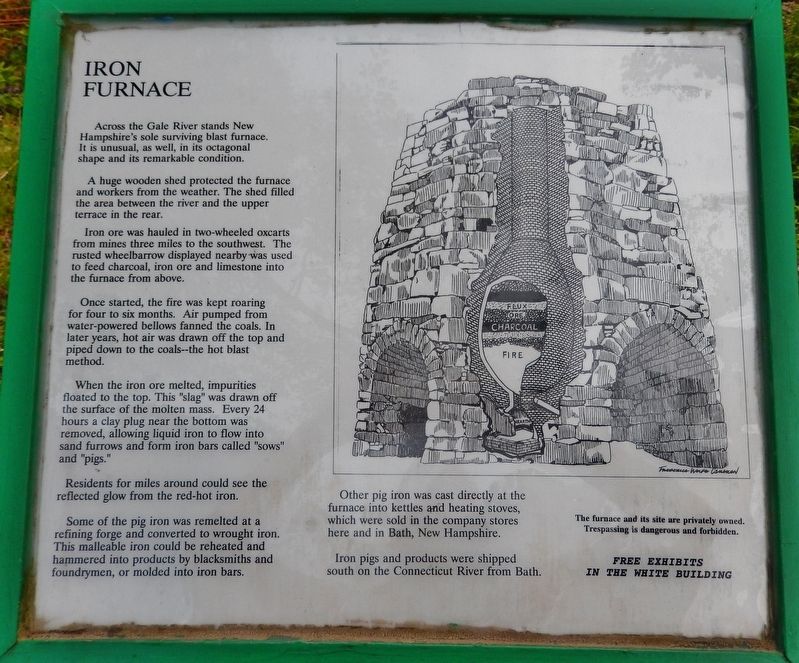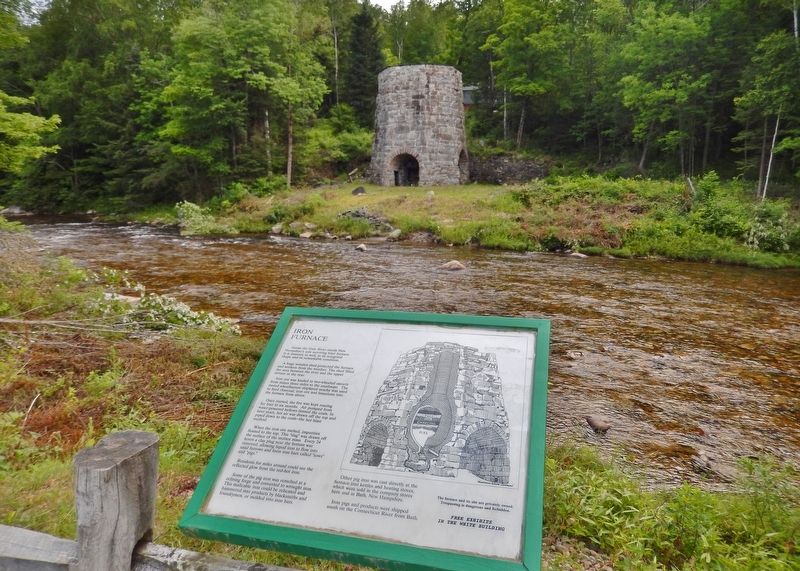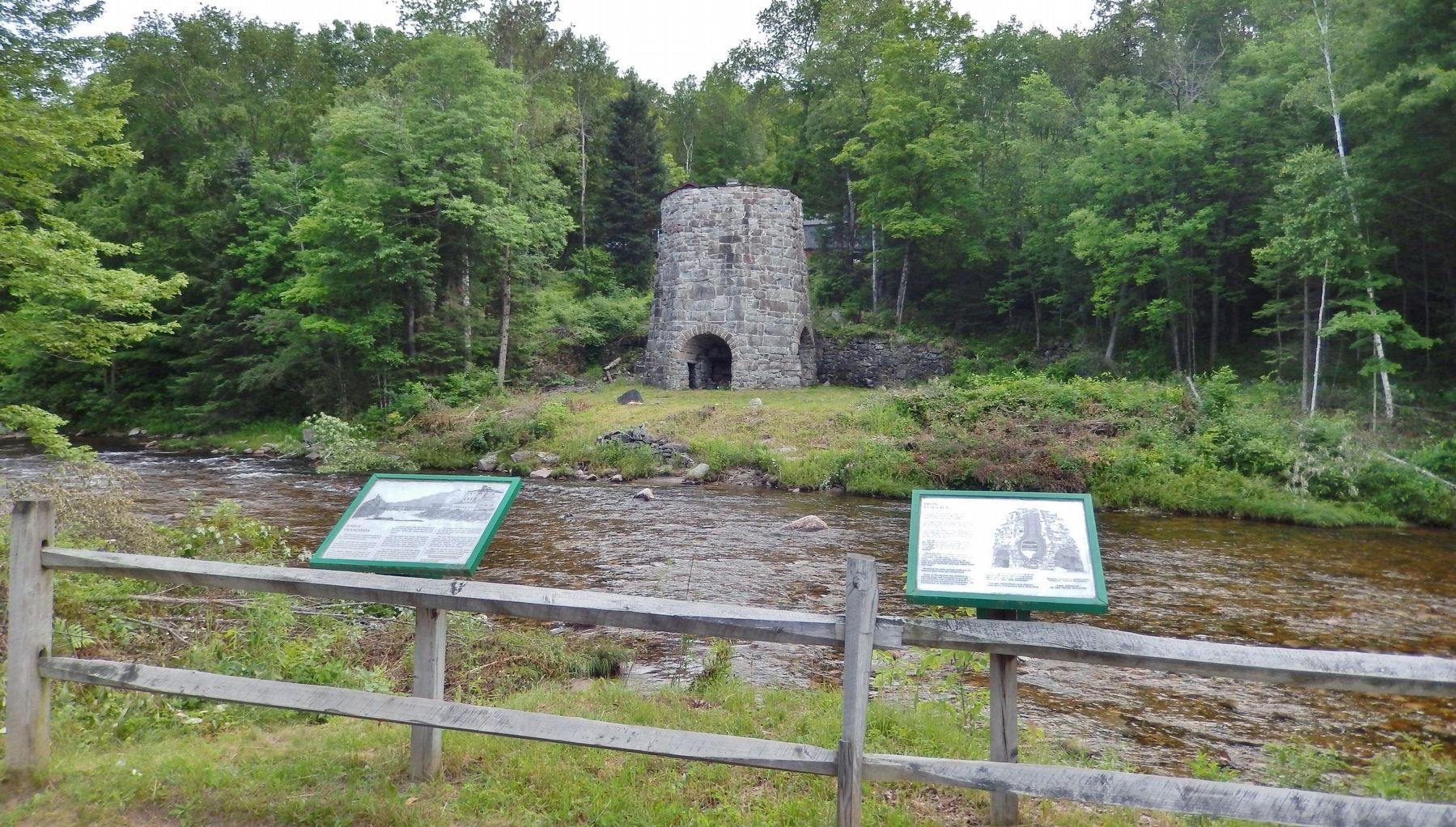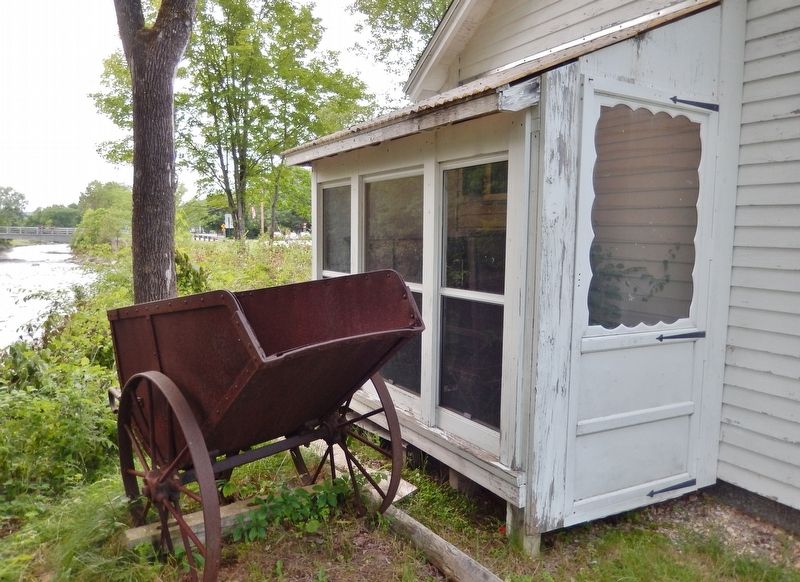Franconia in Grafton County, New Hampshire — The American Northeast (New England)
Iron Furnace
Across the Gale River stands New Hampshire's sole surviving blast furnace. It is unusual, as well, in its octagonal shape and its remarkable condition.
A huge wooden shed protected the furnace and workers from the weather. The shed filled the area between the river and the upper terrace in the rear.
Iron ore was hauled in two-wheeled oxcarts from mines three miles to the southwest. The rusted wheelbarrow displayed nearby was used to feed charcoal, iron ore and limestone into the furnace from above.
Once started, the fire was kept roaring for four to six months. Air pumped from water-powered bellows fanned the coals. In later years, hot air was drawn off the top and piped down to the coals – the hot blast method.
When the iron ore melted, impurities floated to the top. This "slag" was drawn off the surface of the molten mass. Every 24 hours a clay plug near the bottom was removed, allowing liquid iron to flow into sand furrows and form iron bars called "sows" and "pigs."
Residents for miles around could see the reflected glow from the red-hot iron.
Some of the pig iron was remelted at a refining forge and converted to wrought iron. This malleable iron could be reheated and hammered into products by blacksmiths and foundrymen, or molded into iron bars.
Other pig iron was cast directly at the furnace into kettles and heating stoves, which were sold in the company stores here and in Bath, New Hampshire.
Iron pigs and products were shipped south on the Connecticut River from Bath.
Erected by Iron Furnace Interpretive Center and Franconia Area Heritage Council.
Topics and series. This historical marker is listed in this topic list: Industry & Commerce. In addition, it is included in the Appalachian Iron Furnaces series list.
Location. 44° 13.802′ N, 71° 45.287′ W. Marker is in Franconia, New Hampshire, in Grafton County. Marker is on Main Street (New Hampshire Route 116) 0.1 miles south of Sugar Hill Road (New Hampshire Route 117), on the left when traveling north. Marker is located in a small roadside park, on the west side of the highway, overlooking the Gale River and the subject iron furnace ruins. Touch for map. Marker is in this post office area: Franconia NH 03580, United States of America. Touch for directions.
Other nearby markers. At least 8 other markers are within 5 miles of this marker, measured as the crow flies. Early Franconia (here, next to this marker); 1889 Iron Bridge (a few steps from this marker); Stone Iron Furnace (within shouting distance
of this marker); First Ski School in America (approx. ¾ mile away); Franconia College (approx. 1.9 miles away); Fanny’s Little Playhouse (approx. 3.6 miles away); Frances Glessner Lee (approx. 3.8 miles away); Willowdale Settlement (approx. 4.4 miles away). Touch for a list and map of all markers in Franconia.
Related markers. Click here for a list of markers that are related to this marker. Besaw Iron Furnace Interpretive Center
Also see . . . Besaw Iron Furnace Interpretative Center: The Only Blast Furnace Still Standing in New Hampshire. Town of Franconia website entry
The octagonal stone stack that is visible on the far bank of the Gale River is all that remains of a 200-year-old iron smelter shown on an 1805 map of Franconia. The New Hampshire Iron Factory Company rebuilt the original furnace several times, adding hot blast after 1840 and extending the height to its present 32ft. Chiseled into one of the heavy stones in the west arch opening is "S. Pettee, Jr. 1859". Pettee was a well-known iron master who was associated with several blast furnaces in New England. He was the last known foreman to operate this furnace. (Submitted on April 15, 2018, by Cosmos Mariner of Cape Canaveral, Florida.)
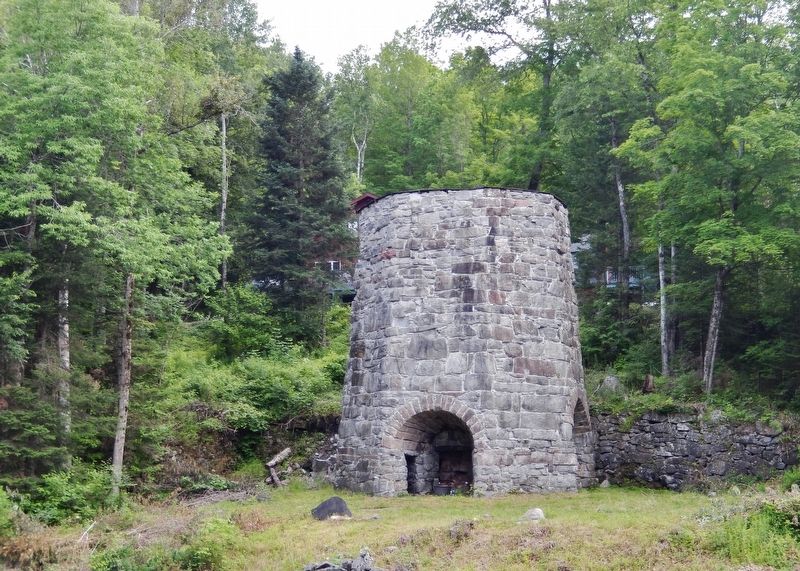
Photographed By Cosmos Mariner, July 7, 2017
4. Franconia Iron Works
White Mountain History website entry
Click for more information.
Click for more information.
Credits. This page was last revised on May 16, 2022. It was originally submitted on April 15, 2018, by Cosmos Mariner of Cape Canaveral, Florida. This page has been viewed 419 times since then and 64 times this year. Photos: 1, 2, 3, 4, 5. submitted on April 15, 2018, by Cosmos Mariner of Cape Canaveral, Florida. • Bill Pfingsten was the editor who published this page.
